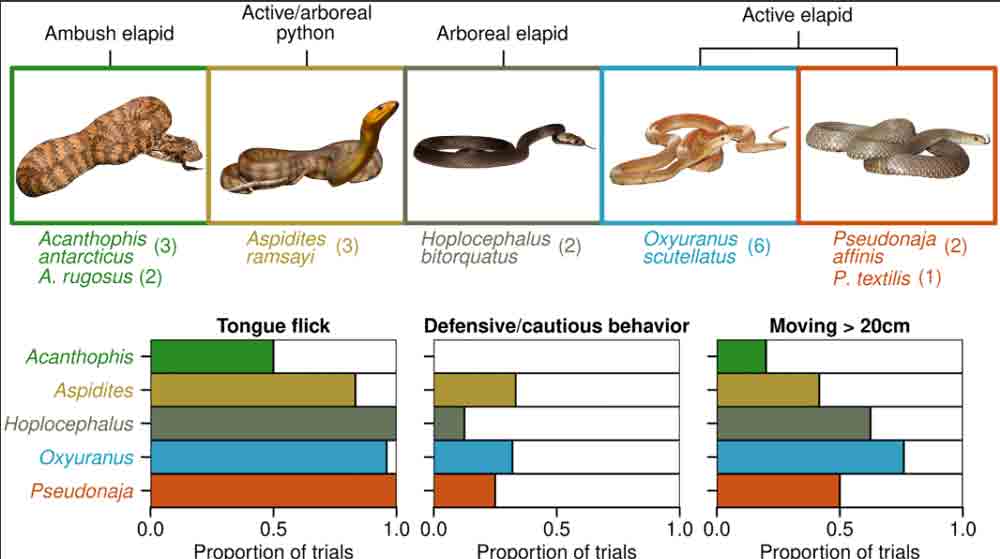Snakes don't have external ears but that doesn't mean they cannot hear. In fact, a new study put out by the University of Queensland asserts that snak
Snakes don’t have external ears but that doesn’t mean they cannot hear. In fact, a new study put out by the University of Queensland asserts that snakes can hear and do react to airborne sounds, in addition to hearing via ground vibrations. They do have an inner ear and do react to sound waves traveling through air and may also be able to hear human voices.
University of Queensland Prof. Dr. Christina Zdenek, of the School of Biological Sciences, and in conjunction with Prof. Damian Candusso of Queensland University of Technology, Timothy Staples of Marine PaleoEcology Lab, The University of Queensland, St. Lucia, Queensland, Australia, Chris Hay of the Australian Reptile Academy, Brisbane, Queensland, Australia, and lachlan N. Bourke of Venom Evolution Lab, School of Biological Sciences, The University of Queensland, St. Lucia, Queensland, Australia, conducted 304 controlled experiment trials on 19 snakes from the Acanthophis, Aspidites, Hoplocephalus, Oxyuranus, Pseudonaja and observed how the snakes would respond to three sounds; “filtered pink-noise within the following frequency ranges: 0–150Hz (sound 1, which produced ground vibrations, as measured by an accelerometer), 150–300Hz (sound 2, which did not produced ground vibrations), 300–450Hz (sound 3, which did not produced ground vibrations).”
They determined that the responses of the snakes were genus dependent, with the woma python increasing their probability of movement when hearing certain sound. They found that three other snake species, death adders (Acanthophis), Taipans, (Oxyuranus) and brown snakes, (Pseudonaja) were apt to retreat from the sound and move away. They found that rattlesnakes would respond to airborne sounds emitted from speakers, and sea snakes responded to sounds via an underwater speaker playing the sound between 40 and 600Hz.
The study found that many snake responses varied, with certain species just flicking their tongue, while others got into a defensive posture (freezing, hissing head jerks, fixation, jaw dropping, periscoping) and others moving away from the sound. Many snakes exhibited small head movements upon hearing the varying should levels.
The complete study,”Sound garden: How snakes respond to airborne and groundborne sounds ” can be read on the PLOS One Journal.



